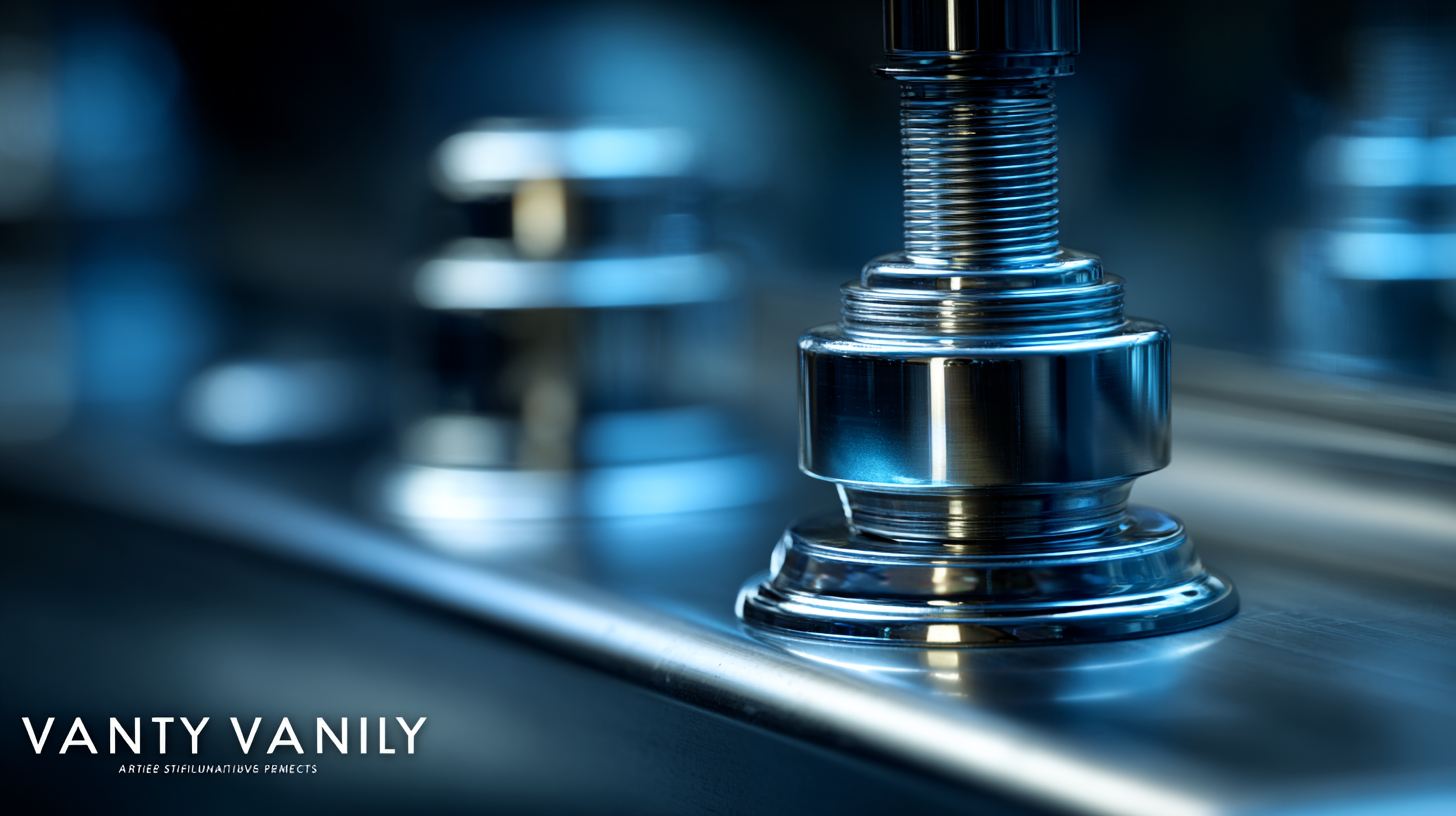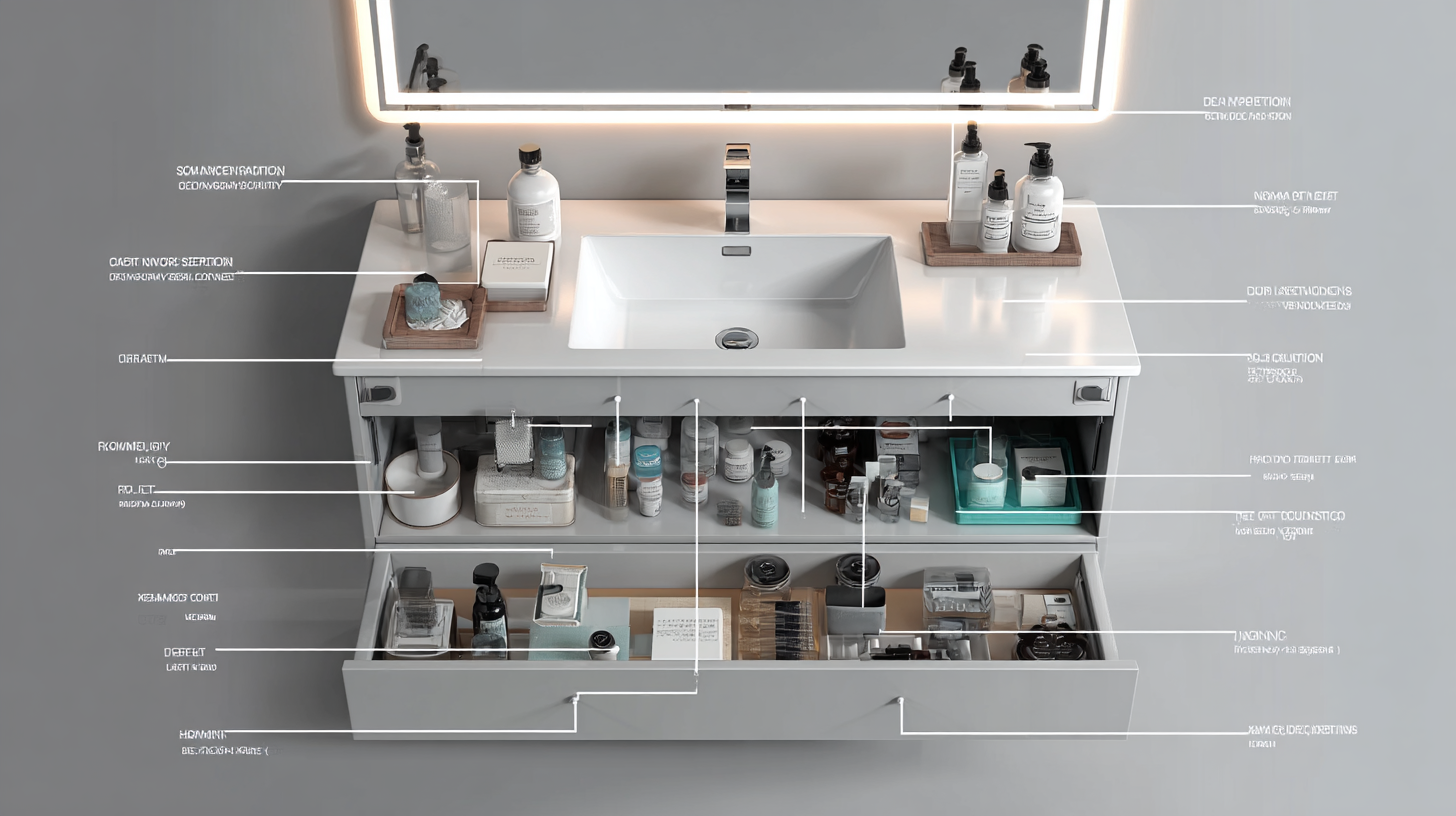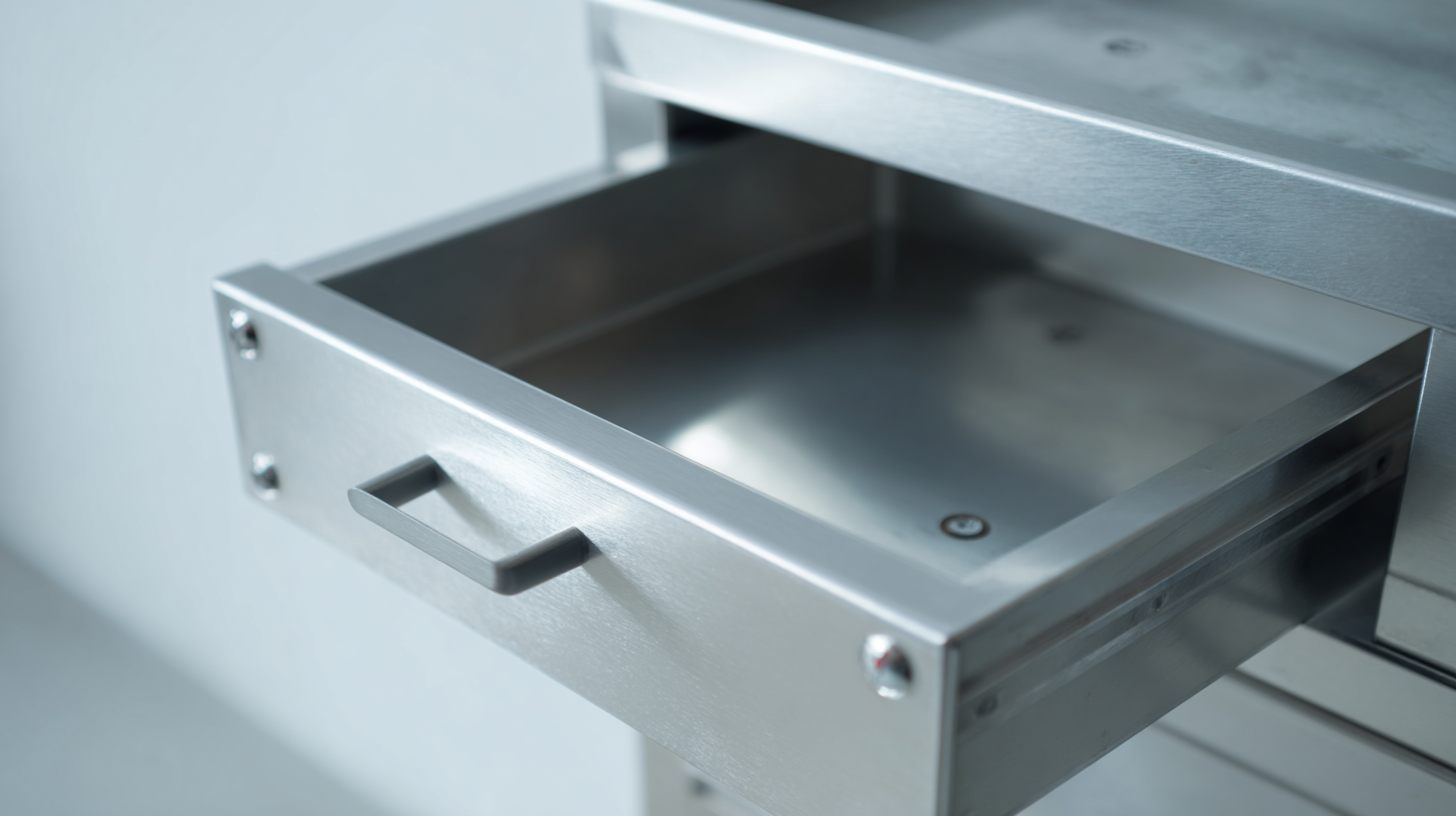Leave Your Message
In recent years, the global demand for aluminium vanity has surged, driven by the material's durability, lightweight properties, and aesthetic versatility. According to a report by MarketsandMarkets, the aluminium market is projected to reach USD 202.5 billion by 2025, with a significant portion attributed to the furniture industry, where aluminium vanities are gaining popularity due to their corrosion resistance and modern appeal. As consumers prioritize quality and design in their home furnishings, choosing the right aluminium vanity becomes an essential consideration. Understanding key technical specifications such as alloy types, surface treatments, and weight capacity can greatly influence the performance and longevity of these products. This blog will guide you through the critical factors to consider when selecting the best aluminium vanity to ensure your investment meets both style and functional needs.

When selecting the best aluminium vanity for your bathroom, key technical specifications play a pivotal role in ensuring both functionality and style. First, consider the dimensions of the vanity. According to recent trends, bathrooms are evolving to maximize storage space and surface area, highlighting the importance of choosing a vanity that fits well within your available area while still offering ample storage solutions. The average size for bathroom vanities has shifted towards slightly larger units, promoting an increase in both aesthetic appeal and utility.
Next, material quality is crucial. Aluminium offers several advantages, including resistance to corrosion and rust, making it an ideal choice for the humid environment of bathrooms. A report indicated that bathrooms equipped with high-quality materials can enhance property value significantly, with some homeowners seeing an increase of up to 15% in their home’s value post-renovation. Additionally, the design of the vanity, from sleek modern lines to more traditional looks, can contribute to the overall ambiance of the space, thereby making aesthetic choices equally important in the selection process. Balancing practical requirements with design preferences will ultimately lead to a more satisfying bathroom upgrade.

When considering the common industry applications of aluminium vanities, it’s important to note their versatility and sustainability in the beauty sector. Aluminium is lightweight yet durable, making it ideal for various applications, from bathroom fixtures to high-end cosmetic packaging. This metal is a preferred choice for brands looking to reduce their environmental impact, as it is recyclable and can significantly minimize plastic waste in the beauty industry.
When selecting an aluminium vanity, here are a few tips to keep in mind. First, assess the finish: a powder-coated surface not only enhances aesthetic appeal but also adds a layer of protection against wear and corrosion. Second, consider the size and weight of the vanity, ensuring it fits your space without compromising functionality. Lastly, look for options that offer modular designs, which can be more adaptable to changing needs and styles over time.
In the age of sustainability, brands are reimagining their packaging to be more eco-friendly. Aluminium vanities can contribute to this movement by serving as sustainable alternatives to plastic, aligning with the industry's shift towards responsible consumption. Choosing an aluminium vanity not only enhances your interior but also supports a broader goal of reducing environmental footprints in the beauty world.
When considering aluminium vanity products, it's crucial to identify potential issues that could affect their performance and longevity. According to the 2021 Market Research Report by Allied Market Research, approximately 18% of aluminium vanity products fail due to corrosion, especially in humid environments. This underscores the importance of selecting products that boast high-quality finishing and protective coatings to mitigate rust and oxidation.
Another common problem is the mechanical integrity of aluminium vanities. A survey conducted by the National Kitchen and Bath Association revealed that nearly 25% of consumers experienced structural weaknesses in their vanity units within the first few years of use. When choosing your vanity, it's essential to look for those with reinforced designs and higher-grade aluminium alloys. Products made from 6061 or 6063 aluminium not only show better tensile strength but also improve overall durability. By focusing on these critical specifications, consumers can avoid common pitfalls associated with inferior aluminium vanity products.

When deciding on an aluminium vanity, it's essential to compare it against other materials like natural stone, engineered stone, wood, and glass. Aluminium offers unique advantages such as resistance to moisture and rust, which makes it a strong contender in bathroom environments where humidity can cause havoc. On the other hand, natural materials like marble or granite provide a timeless elegance but can require more maintenance and are less durable. Understanding the pros and cons of each material not only helps in making an informed decision but also ensures that the choice aligns with your lifestyle and aesthetic preferences.
Tips: When selecting your vanity, consider the overall design of your bathroom. The right material should complement the existing decor while meeting practical needs. Also, prioritize sustainability; aluminium is often recyclable, which can contribute positively to environmental efforts. Lastly, evaluate the weight and installation requirements—some materials might need more robust cabinetry than others, impacting overall installation costs and complexity. Choosing the right vanity material is crucial for both function and style in your bathroom space.
When investing in an aluminium vanity, proper maintenance is essential to ensure its longevity and aesthetic appeal. Aluminium is known for its durability, but it can still benefit from regular care. One of the key maintenance tips is to regularly clean the surfaces with a mild detergent and water. Avoid harsh chemicals that can corrode the aluminium, leading to unsightly damage over time. A soft cloth should be used to gently wipe away any dirt or stains, preserving the finish and shine.
Another important aspect of maintaining your aluminium vanity is protecting it from moisture. Although aluminium is resistant to rust, excess moisture can still promote tarnishing and affect its look. Ensure that the area around the vanity is well-ventilated and use a dehumidifier in damp environments. Additionally, consider applying a protective sealant every few years to create a barrier against moisture and prolong the life of the vanity.
Finally, it’s crucial to inspect the vanity regularly for any signs of wear or damage. Catching small issues early can prevent larger problems down the road. Tighten screws and fittings as needed, and if you notice any scratches, buff them out with a suitable aluminium polish. By following these maintenance tips, you can keep your aluminium vanity looking its best for years to come.
| Specification | Details |
|---|---|
| Material Grade | Aluminium 5052 or 6061 |
| Finish | Powder Coated or Anodized |
| Weight Capacity | Up to 200 lbs (90 kg) |
| Water Resistance | High, resistant to corrosion |
| Design Style | Modern, Minimalist, or Classic |
| Installation Type | Wall-mounted or freestanding |
| Warranty | Typically 5 years |
